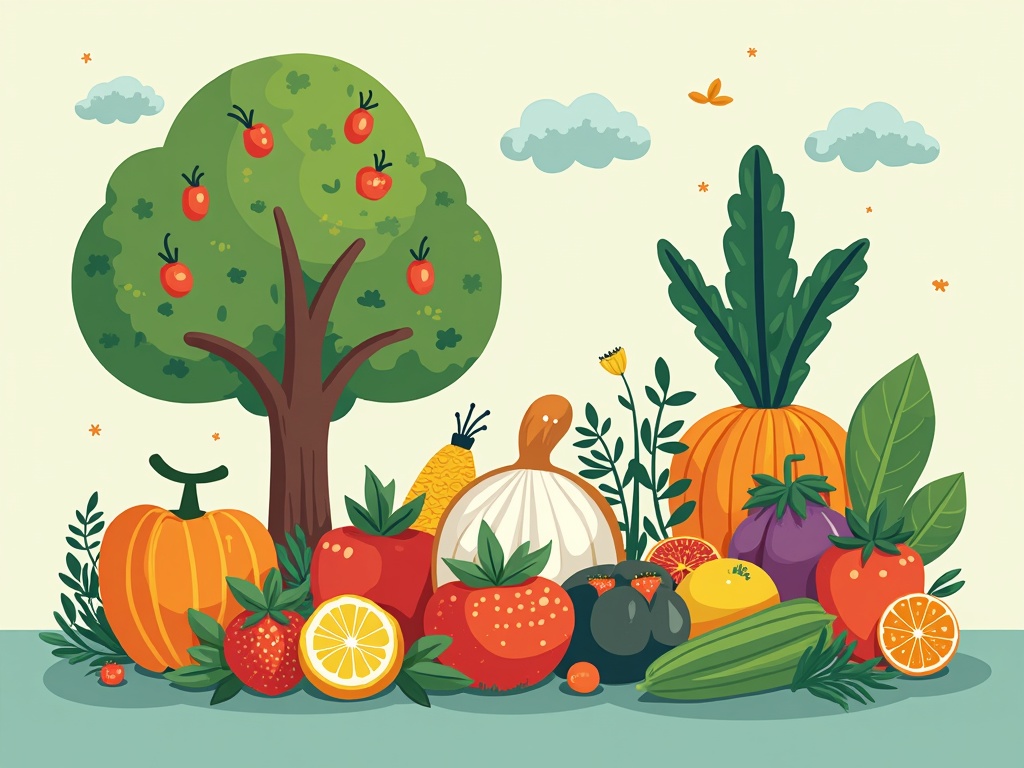Eating for Personal and Planetary Health: A Guide to Sustainable Nutrition
Imagine a world where the food choices you make not only nourish your body but also contribute to a healthier planet. It’s not a utopian dream; it’s the reality that awaits when you embrace eating for personal and planetary health. In this comprehensive guide, we’ll explore the principles of sustainable nutrition and how you can make choices that benefit both you and the environment.
Why Eating for Personal and Planetary Health Matters
The food system is a major contributor to environmental problems, including greenhouse gas emissions, deforestation, water pollution, and biodiversity loss. At the same time, diet-related diseases are on the rise globally. Eating for personal and planetary health offers a solution by promoting dietary patterns that are both nutritious and environmentally sustainable. This approach recognizes that human health and environmental health are inextricably linked.
The Interconnectedness of Our Food Choices
Every bite we take has an impact. From the farm to the table, the journey of our food leaves a footprint on the planet. Understanding this interconnectedness is the first step towards making more sustainable choices.
Agriculture contributes significantly to greenhouse gas emissions.
Deforestation for agriculture destroys habitats and reduces biodiversity.
Fertilizer use pollutes waterways and harms aquatic life.
Food waste contributes to landfill overflow and methane emissions.
Principles of Sustainable Nutrition
Sustainable nutrition is about meeting the nutritional needs of the present without compromising the ability of future generations to meet their own needs. It encompasses a range of practices that promote both human and environmental well-being.
Prioritize Plant-Based Foods
A diet rich in plant-based foods is generally more sustainable and healthier. Plant-based diets tend to have a lower environmental impact than diets high in animal products.
**Focus on fruits, vegetables, and whole grains:These foods are nutrient-dense and have a relatively low environmental footprint.
**Include legumes and nuts:These are excellent sources of protein and fiber, and they require fewer resources to produce than animal protein.
**Reduce your consumption of red meat:Beef production has a particularly high environmental impact due to land use, water consumption, and greenhouse gas emissions.
Choose Seasonal and Local Foods
Eating seasonally and locally reduces transportation emissions and supports local farmers.
**Buy from farmers’ markets:Farmers’ markets offer fresh, seasonal produce and the opportunity to connect with local farmers.
**Join a CSA (Community Supported Agriculture) program:CSAs provide a regular supply of seasonal produce from local farms.
**Grow your own food:Even a small garden can provide fresh herbs, vegetables, and fruits.
Minimize Food Waste
Reducing food waste is one of the most effective ways to lessen your environmental impact.
**Plan your meals:Create a meal plan and shopping list to avoid buying more food than you need.
**Store food properly:Learn how to store different types of food to keep them fresh for longer.
**Use leftovers creatively:Turn leftovers into new meals or freeze them for later.
**Compost food scraps:Composting reduces landfill waste and creates nutrient-rich soil for your garden.
Choose Sustainable Seafood
Overfishing and destructive fishing practices are threatening marine ecosystems. Choosing sustainable seafood helps protect these vital resources.
**Look for certifications:Certifications like the Marine Stewardship Council (MSC) indicate that seafood comes from well-managed fisheries.
**Consult seafood guides:Organizations like the Monterey Bay Aquarium’s Seafood Watch provide recommendations on sustainable seafood choices.
**Try different species:Explore less popular but sustainable seafood options to reduce pressure on overfished species.
Reduce Processed Foods and Packaging
Processed foods often require more energy and resources to produce and package.
**Cook from scratch:Preparing meals from whole ingredients reduces your reliance on processed foods.
**Choose minimally processed foods:Opt for foods with fewer ingredients and less packaging.
**Reduce packaging waste:Buy in bulk, choose products with minimal packaging, and recycle or reuse packaging materials.
Practical Tips for Eating Sustainably
Making the shift towards sustainable nutrition can seem daunting, but it doesn’t have to be. Here are some practical tips to help you get started:
Start Small
Begin by making one or two small changes to your diet and lifestyle. For example, you could try incorporating one meatless meal per week or buying more produce from your local farmers’ market.
Educate Yourself
Learn more about the environmental and health impacts of different foods. The more you know, the easier it will be to make informed choices.
Experiment with Plant-Based Recipes
Explore new and delicious ways to incorporate more plant-based foods into your diet. There are countless resources available online and in cookbooks.
Get Creative with Leftovers
Don’t let leftovers go to waste. Look for creative ways to repurpose them into new meals.
Support Sustainable Businesses
Choose to support businesses that are committed to sustainable practices, such as local farms, ethical seafood suppliers, and companies that use eco-friendly packaging.
The Benefits of Eating for Personal and Planetary Health
The benefits of eating for personal and planetary health extend far beyond just your own well-being.
Improved Health
A sustainable diet rich in fruits, vegetables, whole grains, and legumes can reduce your risk of chronic diseases such as heart disease, type 2 diabetes, and certain cancers.
Environmental Protection
By making sustainable food choices, you can help reduce greenhouse gas emissions, conserve water, protect biodiversity, and minimize pollution.
Support for Local Communities
Choosing local and seasonal foods supports local farmers and strengthens your community.
Ethical Considerations
Sustainable nutrition often involves ethical considerations such as animal welfare and fair labor practices. By making conscious choices, you can support a more just and equitable food system.
Challenges and Considerations
While the benefits of eating for personal and planetary health are clear, there are also challenges and considerations to keep in mind.
Accessibility and Affordability
Sustainable foods are not always accessible or affordable for everyone. It’s important to find ways to make sustainable choices within your budget and access to resources.
Cultural and Personal Preferences
Dietary changes can be challenging due to cultural and personal preferences. It’s important to find a sustainable eating pattern that works for you and your lifestyle.
Information Overload
There is a lot of information available about sustainable nutrition, and it can be overwhelming. Focus on reliable sources and make informed choices based on your own needs and values.
Conclusion: Embracing a Sustainable Future, One Bite at a Time
Eating for personal and planetary health is not just a trend; it’s a fundamental shift towards a more sustainable and equitable food system. By making conscious choices about the food we eat, we can nourish our bodies, protect the environment, and support a healthier future for generations to come. Start small, educate yourself, and embrace the journey towards sustainable nutrition. Every bite counts.

